- No products in the cart.
Nurofen intensive Tab n / a film about 200mg + 500mg 12 pieces
$6.86
Nurofen intensive Tab n / a film about 200mg + 500mg 12 pieces
Description
Composition
Active substance:
1 tablet coated with a film coating comprising:
200 mg ibuprofen and 500 mg paracetamol.
Excipients:
Croscarmellose sodium 30 mg, 120 mg microcrystalline cellulose, colloidal silica 3 mg magnesium stearate 5 mg stearic acid 4 mg.
shell composition: white film coating of 13 mg (40% polyvinyl alcohol, 25% titanium dioxide, macrogol, 20.2%, 14.8% talc) film coating with pearlescent 7 mg (47% polyvinylalcohol, 27% talc, macrogol 13.3% nacreous pigment based on mica 10% (28% titanium dioxide, potassium aluminum silicate (E555), 72%), 2.7% polysorbate).
Description:
The combination of active ingredients – 200 mg ibuprofen and 500 mg paracetamol which enhance the effect of each other, against pain and inflammation. Two active ingredients – ibuprofen and paracetamol differ on the mechanism and site of action. As a result of their synergistic action achieves a marked reduction of pain sensitivity and increased antipyretic action than individually.
Product form:
Tablets, film-coated, 6 pcs.
Contraindications
Hypersensitivity to ibuprofen, paracetamol or to other components of the formulation.
Simultaneous administration of other drugs containing paracetamol.
Full or partial combination of asthma, recurrent nasal polyposis, and paranasal sinuses, and intolerance to acetylsalicylic acid or other NSAIDs (including history).
Erosive and ulcerative diseases of the gastrointestinal (including gastric ulcer and duodenal ulcer disease, Crohn’s disease, ulcerative colitis) or ulcer bleeding in the active phase or in history (two or more episodes of proven peptic ulcer or bleeding ulcer).
Bleeding or perforation of ulcers of the gastrointestinal tract in history, triggered by the use of NSAIDs.
Severe heart failure (NYHA class IV – classification of New York Heart Association).
Severe liver failure or liver disease in active phase.
Renal failure, severe severity (creatinine clearance
Decompensated heart failure; period after coronary artery bypass grafting.
Or other cerebrovascular bleeding.
Pregnancy (III trimester).
Age up to 18 years.
Hemophilia and other bleeding disorders (including hypocoagulation), hemorrhagic diathesis.
Genetic lack of glucose-6-phosphate dehydrogenase.
Carefully.
In the presence of the conditions referred to in this section, before application of the drug should consult a physician.
Simultaneous treatment with other NSAIDs, a history of a single episode of gastric ulcer or gastrointestinal bleeding ulcer; gastritis, enteritis, colitis, the presence of infection Helicobacter pylori, ulcerative colitis; bronchial asthma or allergic diseases in the acute stage or history – possibly bronchoconstriction; systemic lupus erythematosus or mixed connective tissue disease (Sharp’s syndrome) – increased risk of aseptic meningitis; chickenpox; renal failure, including during dehydration (creatinine clearance of less than 30-60 ml / min); nephrotic syndrome; liver failure; Frequent use of alcohol; hypertension and / or heart failure, cerebrovascular disease; simultaneous use of drugs that may increase the risk of ulcers or bleeding, in particular, oral corticosteroids (including prednisone), anticoagulants (including warfarin), selective serotonin reuptake inhibitors (including citalopram, fluoxetine, paroxetine, sertraline ) or antiplatelet agents (including acetylsalicylic acid, clopidogrel); Pregnancy Trimester I-II, during breast-feeding; elderly age; cirrhosis with portal hypertension, hyperbilirubinemia; blood diseases of unknown etiology (leucopenia and anemia), hyperlipidemia, diabetes mellitus, peripheral arterial disease.
Dosage
200 mg + 500 mg
Indications
Back pain, joint pain, muscular and rheumatic pain, neuralgia, headache, migraine, toothache, painful menstruation, sore throat, fever, symptoms of colds and flu.
Interaction with other drugs
Paracetamol.
Antiemetics: decrease the rate of absorption of paracetamol while the use of metoclopramide or domperidone.
Anticoagulants: prolonged use of preparations containing paracetamol, can enhance the effect of anticoagulants, particularly warfarin and increase the risk of bleeding.
Cholestyramine: decrease the rate of absorption of paracetamol while the use of colestyramine.
Paracetamol falsely increases the performance of continuous control of blood sugar levels (CGM) as compared with the meter. This applies to patients using CGM devices that contain or do not contain the automatic insulin pump, i.e. I type I diabetes.
Caution should be exercised with simultaneous use of paracetamol and flucloxacillin, which is associated with increased risk of metabolic acidosis with a high anion gap, especially in patients with risk factor for glutathione deficiency (including patients with severe renal failure, sepsis, malnutrition and chronic alcoholism). Recommended closely monitored for signs of disorders of acid-base balance, namely metabolic acidosis, high anionic difference, including the determination of 5-oxoproline in urine.
Ibuprofen.
It should avoid the simultaneous use of ibuprofen with the following drugs:
Acetylsalicylic acid: with the exception of low-dose acetylsalicylic acid (not more than 75 mg per day), prescribed by the doctor, since the combined use may increase the risk of side effects. With simultaneous use of ibuprofen reduces inflammatory and antiplatelet effect of acetylsalicylic acid (may increase the incidence of acute coronary insufficiency in patients receiving as antiplatelet agents acetylsalicylic acid, low dose, after initiation of ibuprofen).
Other NSAIDs, in particular, selective COX-2 inhibitors: avoid simultaneous use of two or more agents from the group of NSAIDs due to possible increased risk of side effects.
Precautions used simultaneously with the following drugs:
Anticoagulants and thrombolytic drugs: NSAIDs may enhance the effect of anticoagulants, particularly warfarin and thrombolytic agents.
Antihypertensive agents (ACE inhibitors and angiotensin II) and diuretics NSAIDs may reduce efficacy of these groups. In some patients with impaired renal function (e.g., patients with dehydration or in elderly patients with impaired renal function) co-administration of ACE inhibitors or antagonists of angiotensin II and agents that inhibit cyclooxygenase, may lead to a deterioration of renal function, including the development of acute renal failure (usually reversible). These interactions should be considered in patients taking coxibs simultaneously with ACE inhibitors or angiotensin II. Therefore, the combined use of the above means should be used with caution, especially in the elderly. It is necessary to prevent dehydration in patients, and consider monitoring renal function after initiation of such combination therapy, and periodically – in the future. Diuretics and ACE inhibitors may increase the nephrotoxicity of NSAIDs.
Steroids: increased risk of gastrointestinal ulcers and gastrointestinal bleeding.
Antiplatelet agents and selective serotonin reuptake inhibitors: increased risk of gastrointestinal bleeding.
Cardiac glycosides: co-administration of NSAIDs and cardiac glycosides can lead to aggravation of heart failure, decreased glomerular filtration rate and an increase in concentration of cardiac glycosides in blood plasma.
of lithium drugs: there is evidence of the likelihood of increasing the concentration of lithium in blood plasma during treatment with NSAIDs.
Methotrexate: there is evidence of the likelihood of increasing concentration of methotrexate in the blood plasma during treatment with NSAIDs.
Cyclosporin: increased risk of nephrotoxicity with concomitant administration of NSAIDs and cyclosporine.
Mifepristone: NSAIDs should be started no earlier than 8-12 days after mifepristone administration as NSAIDs can reduce the efficacy of mifepristone.
Tacrolimus: while the appointment of NSAIDs and tacrolimus may increase the risk of nephrotoxicity.
Zidovudine: simultaneous application of NSAIDs and zidovudine could result in increased gematotoksichnosti. There is evidence of increased risk of haemarthrosis and hematoma in HIV-positive patients with hemophilia who received co-treatment with zidovudine and ibuprofen.
Quinolone antibiotics series: patients receiving collaborative care NSAIDs and quinolone antibiotics series, may increase the risk of seizures.
Myelotoxic drugs increase the expression gematotoksichnosti drug.
Caffeine increases the analgesic effect.
Overdose
Paracetamol.
Symptoms: The symptoms of an overdose of paracetamol during the first 24 hours: pale skin, nausea, vomiting, anorexia and abdominal pain. Liver damage can occur through 12-48 hours after administration, therefore, need to consult a doctor even in the absence of symptoms. May impair glucose metabolism and metabolic acidosis. In severe poisoning, hepatic failure may progress to complications such as encephalopathy, stroke, hypoglycemia, brain swelling and death. Acute renal failure is acute tubular necrosis (determined by back pain, hematuria and proteinuria) can occur even in the absence of severe liver disease. There have been reports of cardiac arrhythmias and pancreatitis.
Treatment: Immediate treatment is required with an overdose of paracetamol. Despite the lack of significant early symptoms, patients should be immediately taken to hospital for immediate medical examination. Symptoms may be limited nausea or vomiting not correspond to the severity of overdose or risk of organ damage. Treatment with activated charcoal should be considered if an excessive dose has been taken less than 1 hour ago. The concentration of paracetamol in plasma should be measured after 4 or more hours after ingestion (earlier concentrations are unreliable). Treatment of N-acetylcysteine can be held up to 24 hours after ingestion of paracetamol, however, the maximum protective effect is achieved after about 8 hours after ingestion. Efficacy antidote is gradually reduced after this time. If necessary, administered intravenously N-acetyl cysteine in accordance with the established grid applications. Outside the hospital, if there is no vomiting, methionine can be applied inside. Patients applied serious hepatic dysfunction at 24 hours after administration of the drug, should be sent to a specialist for poisoning.
Additional information on special patient groups
Increased risk of liver damage when paracetamol overdose is most likely to have:
patients receiving long-term treatment of the enzyme-inducing drugs (such as carbamazepine, phenobarbitone, phenytoin, primidone, and St. John’s wort rifampicin);
patients who use alcohol in amounts recommended above;
patients with glutathione depletion (e.g., patients with eating disorders, cystic fibrosis, HIV, cachexia, starving).
Ibuprofen.
In adults, a dose-dependent effect is not clear the threshold. The half-life of the drug overdose is 1.5-3 hours.
Symptoms include nausea, vomiting, epigastric pain, or more rarely, diarrhea, tinnitus, headache and gastrointestinal bleeding. In more severe cases, there are manifestations of the central nervous system: drowsiness, rarely – excitement, convulsions, disorientation, coma. In cases of severe poisoning can develop metabolic acidosis and increased prothrombin time, kidney failure, liver damage tissue, blood pressure, respiratory depression and cyanosis. Patients with asthma may increase the disease.
Treatment: symptomatic, with obligatory airway, ECG monitoring and vital signs up to the normalization condition of the patient. We recommend the use of activated charcoal oral or gastric lavage for 1 hours after administration of potentially toxic doses of ibuprofen. If ibuprofen has already been absorbed, it can be assigned to alkaline water with the aim of removing the acid derivative of ibuprofen kidney diuresis. Frequent or prolonged convulsions should be to stop the intravenous administration of diazepam or lorazepam. When deterioration of asthma recommend the use of bronchodilators.
pharmachologic effect
Pharmacological group:
Analgesic combined (NSAIDs are non-narcotic analgesic agent +).
Pharmacodynamics:
Combination drug action is due to its constituent components. It has a direct action against pain (analgesic), antipyretic and anti-inflammatory effect. Ibuprofen and paracetamol differ on the mechanism and site of action. As a result of their synergistic action achieves a marked reduction of pain sensitivity and increased antipyretic action than individually.
Ibuprofen – propionic acid derivative from the group of non-steroidal anti-inflammatory drugs (NSAIDs), anti-inflammatory, anti-inflammatory, analgesic and antipyretic effect. The mechanism of action of ibuprofen due to inhibition of prostaglandin synthesis – mediators of pain, inflammation and hyperthermic response through inhibition indiscriminate cyclooxygenase 1 (COX-1) and cyclooxygenase 2 (COX-2). The analgesic effect of ibuprofen provided by its inhibitory effect on peripheral level. Antipyretic effect of ibuprofen is associated with a central inhibition of prostaglandin synthesis in the hypothalamus. Ibuprofen inhibits leukocyte migration in inflammatory focus. Furthermore, ibuprofen reversibly inhibits platelet aggregation.
Paracetamol – non-narcotic analgesic agent, has analgesic, antipyretic and weak anti-inflammatory action. Non-selective COX-2 blocks, mainly in the central nervous system. Paracetamol could also stimulate the activity of serotonin downlink paths, leading to relief of the pain impulse transmission in the spinal cord. At a peripheral level paracetamol have a weak effect on COX-1 and COX-2.
The drug has a rapid therapeutic effect and a more pronounced analgesic effect than Ibuprofen and paracetamol alone. After a single oral anesthetic drug effect is observed after an average of 15 minutes, a clinically significant analgesic effect is attained within 40 minutes and maintained for 8 hours. After receiving two tablets of the preparation analgesic effect observed after an average of 18 minutes, a clinically significant analgesic effect is achieved after 45 minutes and maintained for 9 hours.
Pharmacokinetics:
Ibuprofen: high absorption, is rapidly and almost completely absorbed from the gastrointestinal tract (GIT). Communication with plasma proteins – 90%. Slowly into the joint cavity, it is retained in the synovial fluid, making it larger concentration than in blood plasma. Found in plasma 5 minutes after administration of the drug on an empty stomach, the maximum concentration (Cmax) in plasma is achieved in 1-2 hours. Simultaneous treatment with food may reduce the concentration of ibuprofen in the blood plasma and increased time to reach maximum concentration (Tmax). Degree of ibuprofen absorption is independent of food intake. It is metabolized in the liver. After absorption of about 60% pharmacologically inactive R-form is transformed slowly into the active S-shape. The half-life (T1 / 2) – 2 hr. Predominantly excreted by the kidneys as metabolites (unchanged no more than 1%) and, to a lesser extent in bile as metabolites. Older people have not detected significant differences in the pharmacokinetic profile of ibuprofen compared with younger people. There is evidence that ibuprofen was detected in breast milk in low concentrations.
Paracetamol: high absorption, is rapidly absorbed from the gastrointestinal tract. Communication with plasma proteins insignificant when administered at therapeutic doses; slight increases in overdose. Found in plasma 5 minutes after administration of the drug on an empty stomach, Cmax in plasma attained in 30-40 minutes after administration. Simultaneous treatment with food may reduce the concentration of paracetamol in plasma and increase Tmax. Degree of paracetamol absorption is independent of food intake. It is metabolized in the liver and excreted predominantly in the form of glucuronides and sulfated conjugates to form a glutathione conjugate (about 10%). Excreted by the kidneys. In the form of unchanged paracetamol output less than 5% of the dose. The half-life (T1 / 2) – 3 hr. Hydroxylated metabolite N-acetyl-p-benzoquinoneimine, which is formed in small amounts in the liver and kidneys influenced mixed oxidases and typically detoxified by binding to glutathione, may accumulate with an overdose of paracetamol and cause liver tissue damage. Older people have not detected significant differences in the pharmacokinetic profile of paracetamol compared with younger people. The bioavailability and pharmacokinetic parameters of ibuprofen and paracetamol taken as part of the combination product, do not change both at once, and with repeated use.
Pregnancy and breast-feeding
Data on the use of the drug during pregnancy are not available. Do not use this drug in the III trimester. NSAIDs may delay the onset of labor and to extend and intensify the bleeding like a mother and a child. Until now, there has not been negative effects of paracetamol in the recommended doses to the fetus. If possible, avoid the use of the drug in I and II trimesters of pregnancy. If necessary, use I and II trimesters of pregnancy and during labor should carefully weigh the potential benefits of therapy for the mother and the potential risk to the fetus or child.
Ibuprofen and its metabolites in small amounts (0.0008% of the dose adopted mother) into breast milk, data on adverse effects on infant health are absent. Paracetamol is excreted in breast milk, however, is a clinically significant effect has not.
Conditions of supply of pharmacies
Without recipe.
side effects
The risk of side effects can be minimized, if you take a short course of the drug in the lowest effective dose needed to control symptoms.
In the elderly there is an increased frequency of adverse reactions to treatment with NSAIDs, especially gastrointestinal bleeding and perforation, in some cases fatal.
Side effects are mainly dose dependent. In particular, the risk of gastrointestinal bleeding depends on the dosage range and duration of treatment.
The following adverse reactions were observed at short ibuprofen at doses of 1200 mg / day paracetamol at doses of 3000 mg / day (6 tablets). In the treatment of chronic conditions and long-term use may cause other side effects.
Assessment of the incidence of adverse reactions produced on the basis of the following criteria: very common (> 1/10), frequent (by> 1/100 to 1/1000 and 1/10 000 to 1/10 000), frequency not known (data on the frequency of assessment no).
Blood disorders and lymphatic system:
Very rare: disturbances of hematopoiesis (anemia, leukopenia, aplastic anemia, hemolytic anemia, thrombocytopenia, pancytopenia, agranulocytosis). The first symptoms of such disorders are fever, sore throat, superficial oral ulcers, flu-like symptoms, severe weakness, nosebleeds and bruising, bleeding, and bruising of unknown origin.
Violations by the immune system:
Infrequent: hypersensitivity reactions – nonspecific reactions and anaphylactic allergic reactions, skin reactions (pruritus, urticaria), allergic rhinitis, eosinophilia.
Very rare: severe hypersensitivity reactions, including swelling of the face, tongue and throat, shortness of breath, tachycardia, low blood pressure (anaphylaxis, angioedema or severe anaphylactic shock).
Disorders of the nervous system:
Uncommon: headache.
Very rare: aseptic meningitis. Patients with autoimmune disorders such as systemic lupus erythematosus, mixed connective tissue disease, during treatment with ibuprofen observed isolated cases of symptoms of aseptic meningitis: stiff neck, headache, nausea, vomiting, fever and disorientation, confusion, depression, hallucinations.
Violations of the cardiovascular system:
Frequency is unknown: heart failure, peripheral edema, with prolonged use at increased risk of thrombotic complications (e.g., myocardial infarction), hypertension.
Violations of the respiratory system, thorax and mediastinum:
Frequency not known: bronchial asthma, including its exacerbation, bronchospasm, dyspnea.
Disorders of the gastrointestinal tract:
Uncommon: abdominal pain, nausea, dyspepsia (including heartburn, bloating).
Rare: diarrhea, flatulence, constipation, vomiting.
Very rare: peptic ulcer, perforation or gastrointestinal bleeding, melena, bloody vomiting, in some cases fatal, especially in elderly patients, ulcerative stomatitis, gastritis.
Frequency unknown: exacerbation colitis and Crohn’s disease.
Disorders of the liver and biliary tract:
Rare: abnormal liver function (especially with prolonged use), the increase in “liver” enzymes, hepatitis, jaundice.
Violations of the kidneys and urinary tract:
Rare: acute renal failure (compensated and decompensated), especially with prolonged use, in combination with increasing concentrations of urea in the blood plasma and the appearance of edemas, papillary necrosis, proteinuria and hematuria, nephritic syndrome, nephrotic syndrome, interstitial nephritis, cystitis.
Violations of the skin and subcutaneous tissue disorders:
Common: hyperhidrosis (sweating reinforced).
Uncommon: Skin rash and acute generalized exanthematous pustuloz.
Very rare: exfoliative and bullous dermatosis, including toxic epidermal necrolysis (Lyell’s syndrome), Stevens-Johnson syndrome, erythema multiforme.
Laboratory findings:
Frequent: increase in alanine aminotransferase, gamma-glutamyl, increased plasma concentrations of creatinine and urea, liver function tests outside the norm.
Infrequent: increased levels of aspartate aminotransferase, alkaline phosphatase, creatinine phosphokinase, decreased hemoglobin level, platelet count increase.
When side effects should stop taking the drug and consult a doctor.
special instructions
It is recommended to take the drug the maximum possible short-course, and in the lowest effective dose needed to control symptoms.
In patients with bronchial asthma or allergic disease in the acute phase as well as in patients with a history of asthma / allergy disorders preparation may provoke bronchospasm.
Use of the drug in patients with systemic lupus erythematosus or mixed connective tissue disease associated with an increased risk of aseptic meningitis.
During long-term treatment is required to monitor patterns of peripheral blood and functional state of the liver and kidneys. When symptoms gastropathy shown careful control, comprising carrying esophagogastroduodenoscopy, total blood (hemoglobin), analysis of fecal occult blood. If necessary, the definition of 17-ketosteroids drug should be discontinued 48 hours prior to the study.
During the period of treatment is not recommended intake of ethanol.
Patients with renal failure should consult a physician before using the product, since there is a risk of deterioration of renal function.
Patients with hypertension, including a history of and / or chronic heart failure, it is necessary to consult a physician before using the drug as the drug can cause fluid retention, hypertension and edema.
Patients with uncontrolled blood pressure, congestive heart failure II-III class NYHA, ischemic heart disease, peripheral arterial disease and / or cerebrovascular disease prescribe ibuprofen should be only after a thorough evaluation of benefit / risk ratio, when it is necessary to avoid high doses of ibuprofen (> 2,400mg / day).
The use of NSAIDs in patients with varicella may be associated with an increased risk of severe septic complications of infectious and inflammatory diseases of the skin and subcutaneous fat (for example, necrotizing fasciitis). In this regard, it is recommended to avoid use of the drug varicella.
Information for women planning pregnancy: these drugs inhibit the cyclooxygenase and prostaglandin synthesis, affect ovulation, disrupting the female reproductive function (reversible after discontinuation of treatment).
Should not be taken with any other medicines containing paracetamol. If this happens, you should immediately seek medical help, even if a satisfactory state of health, as it can lead to overdose.
Effects on ability to drive vehicles, machinery.
In compliance with the recommended dosing regimen and timing of application of the drug has no effect on ability to drive and use machines, as well as other classes of potentially hazardous activities that require high concentration and psychomotor speed reactions.
Storage conditions
Store at a temperature not higher than 25 ° C. Keep out of the reach of children.
Dosing and Administration
Please read the instructions before taking the drug.
For oral administration, before or 2-3 hours after a meal. Only for short-term use.
Take one tablet three times per day with water. The interval between doses of the drug should be at least 6 hours.
The maximum single dose: 2 tablets (corresponding to 400 mg of ibuprofen, 1000 mg of acetaminophen).
The maximum daily dose of 6 tablets (corresponding to 1200 mg of ibuprofen, 3000 mg of acetaminophen).
Recommended duration of treatment no more than 3 days. If you are taking the drug for 2-3 days the symptoms persist or intensify, it is necessary to stop treatment and seek medical advice.
Information
Appearance may differ from that depicted in the picture. There are contraindications. You need to read the manual or consult with a specialist
Additional information
| Weight | 0.100 kg |
|---|---|
| Manufacturer | Nurofen |

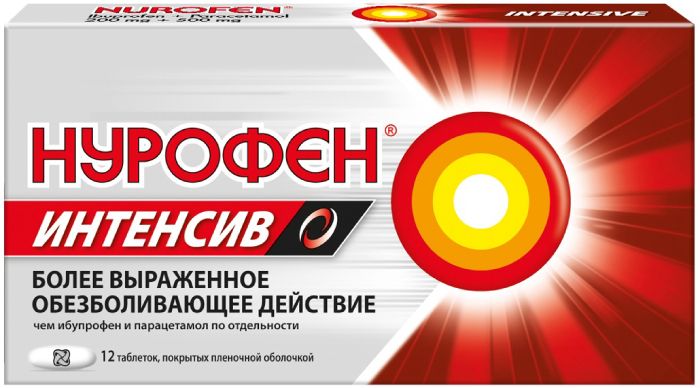
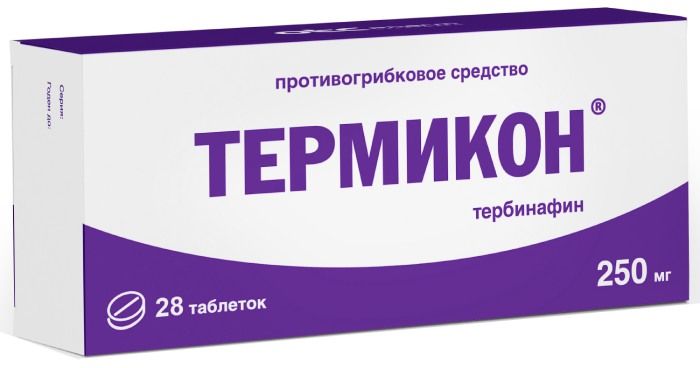
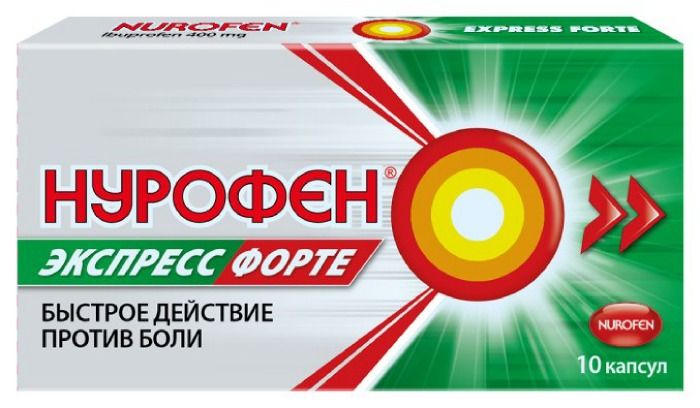
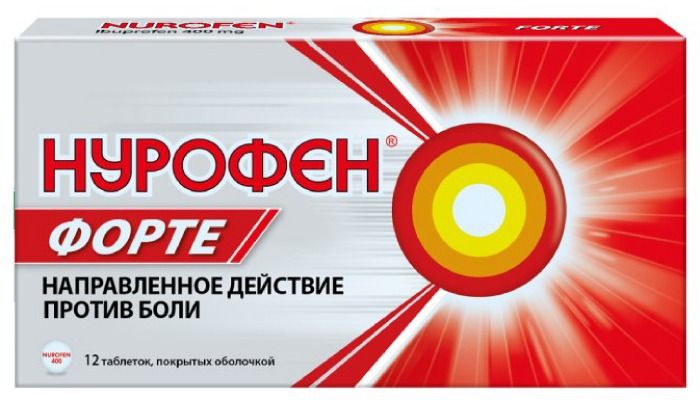
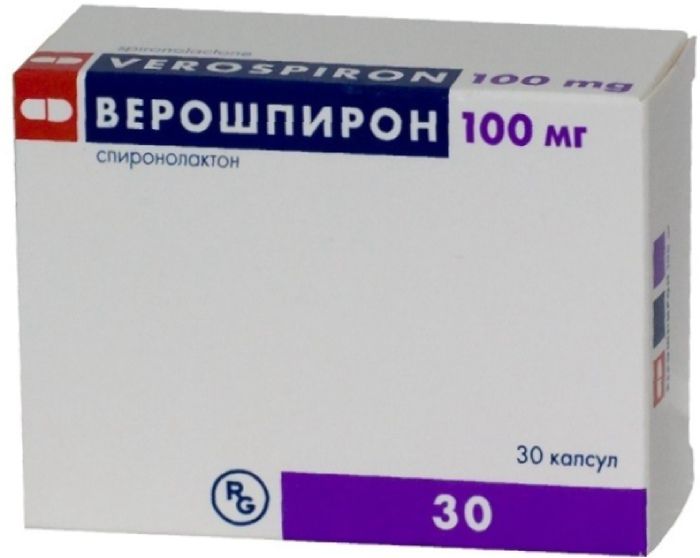
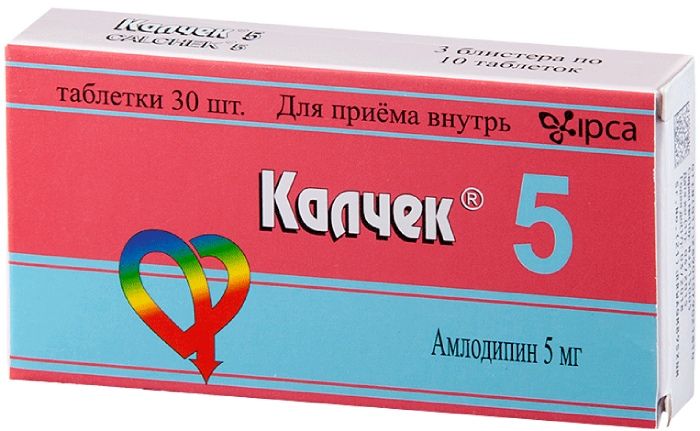

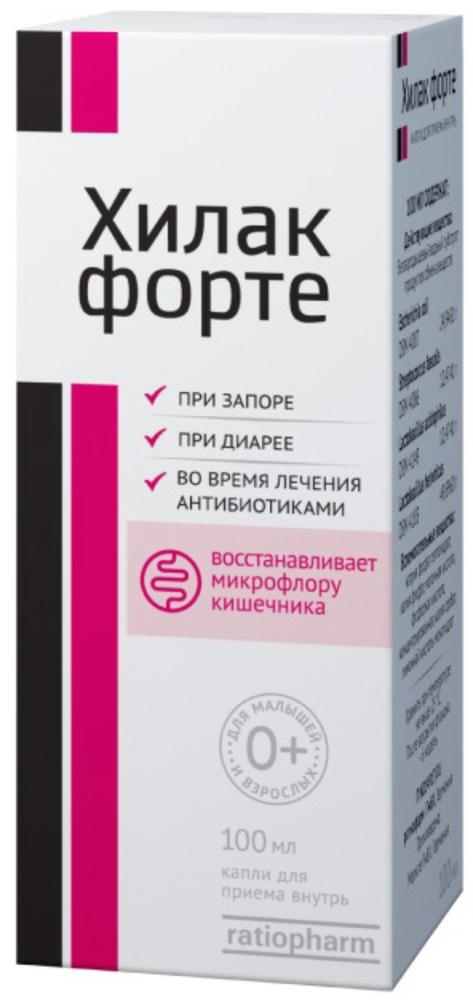
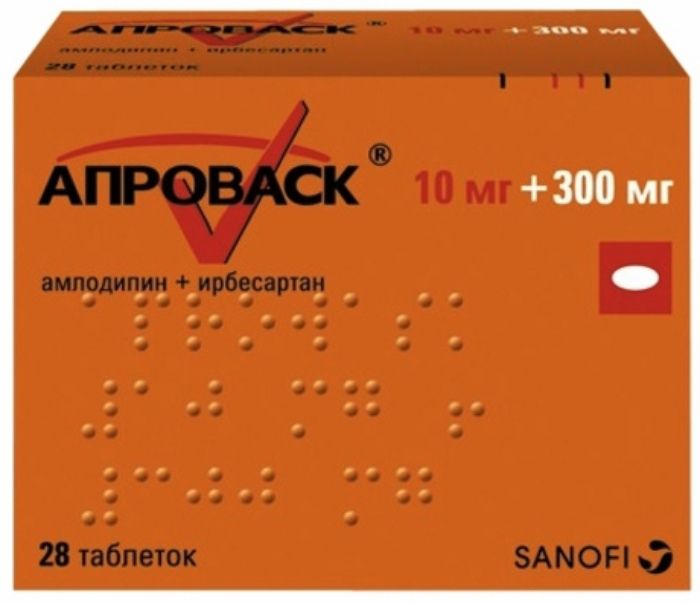




There are no reviews yet.